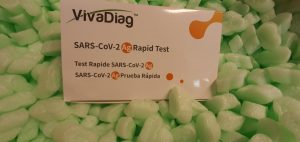Facial reconstruction is a classical approach in forensic anthropology to reestablish the contours of the smooth tissues over the cranium. The correct facial smooth tissue information performs a necessary function in forensic facial reconstruction. Nevertheless, in accordance with earlier research, varied skeletal varieties would possibly relate to completely different thickness in facial smooth tissue. Till now, there are few publications specializing in the connection between facial smooth tissue thickness (FSTT) and completely different skeletal varieties, and none of them analyze the FSTT in accordance with varied sagittal and vertical skeletal varieties. The intention of this research was to testify the attainable existence of correlations between FSTT and completely different skeletal varieties.
So as to exclude interference from age, intercourse, ethnicity and physique mass index (BMI) components, we collected lateral projection X-rays information of 270 Chinese language feminine aged 19-26 years with nomal BMI and divided them into varied skeletal teams. Smooth tissue thickness measurements have been primarily primarily based on 10 anthropological landmarks of the cranium and statistics have been analyzed on the premise of various skeletal varieties. The best variations have been noticed within the higher lip area of maxilla and the psychological area of mandible.
The concave and hypodivergent cranium varieties confirmed the thickest smooth tissue in maxillary area, and the convex and hypedivergent cranium varieties confirmed the thickest smooth tissue within the psychological area. This research supplied a database for FSTT in accordance with varied skeletal varieties in Chinese language feminine inhabitants, and our present research demonstrated that contemplating varied skeletal varieties will enhance the accuracy of facial reconstruction. Our findings present an alternate protocol to acquire the next quantity of fine high quality DNA in a quick time process, useful for forensic and anthropological research.
Environment friendly DNA extraction procedures is a crucial step concerned within the strategy of profitable DNA evaluation of such samples. Varied protocols have been devised for the genomic DNA extraction from human tissues and forensic stains, resembling dental tissue that’s the skeletal half that higher preserves DNA over time. Nevertheless DNA restoration is low and protocols require labor-intensive and time-consuming step previous to isolating genetic materials.
Herein, we describe an especially quick process of DNA extraction from enamel in comparison with classical methodology. Sixteen enamel of 100-year-old human stays have been divided into two teams of eight enamel and we in contrast DNA yield, in time period of amount and high quality, ranging from two completely different pattern preparation steps. Particularly, enamel of group 1 have been handled with a traditional approach primarily based on a number of steps of pulverization and decalcification, whereas enamel of group 2 have been processed following a brand new process to withdraw dental pulp. Within the subsequent part, the samples of each group underwent the identical process of extraction, quantification and DNA profile evaluation. 
Exiting the limbo of perimortem trauma: A quick overview of microscopic markers of hemorrhaging and early therapeutic indicators in bone.
The evaluation and interpretation of the timing of skeletal trauma could be of utmost issue in autopsy specimens, particularly due to autopsy processes and taphonomic occasions. The chronological analysis of bone trauma, consisting often within the gross distinction between antemortem, perimortem and autopsy, is predicated virtually uniquely on macroscopic and morphologic parameters within the anthropological discipline. Nevertheless, each the interference of taphonomy and the scarce persistence of particular options indicating vitality (that means etymologically “produced in life”) and/or some very early bone therapeutic reactions, make it extraordinarily tough.
And strategies of forensic pathology utilized to forensic anthropology can are available extraordinarily useful. If any traces of important blood extravasation, haemorrhage, hematoma, irritation, and biomarkers of early therapeutic response are discovered within the bone tissue of a skeletal lesion (regardless the state of preservation of the physique), then can they be used as a diagnostic software or marker of vitality for that lesion? In these phrases, very important reactions like bleeding or any early signal of bone therapeutic could be the one proof for demonstrating {that a} traumatic occasion was prior the loss of life.
Nonetheless, little or no info, or analysis for that matter, is offered in literature regarding persistence and detectability of vitality markers through the bone decomposition course of. A basic level for correctly figuring out the vitality of a fracture and estimating the post-traumatic time interval in skeletal lesions is the physio-pathological image of the very preliminary therapeutic course of. This text makes an attempt to offer a overview of the physiopathological present information accessible and relevant to osteology.
[Linking template=”default” type=”products” search=”Cat Adipose Tissue Frozen Sections” header=”3″ limit=”145″ start=”2″ showCatalogNumber=”true” showSize=”true” showSupplier=”true” showPrice=”true” showDescription=”true” showAdditionalInformation=”true” showImage=”true” showSchemaMarkup=”true” imageWidth=”” imageHeight=””]
Among the oldest specimens from the Blumenbach Cranium Assortment have been supplied by Baron Georg Thomas von Asch (1729-1807) from Saint Petersburg, who was staff-surgeon common of the Imperial Russian Military, and Privy Council for Empress Catherine II. The 63 human skulls, which originate from all around the Russian Empire, present the premise of a brand new anthropological and palaeopathological investigation. The distribution of age-at-death and intercourse of the cranium pattern reveals that many of the people have been younger grownup males.
Minimize marks, in addition to remnants of sentimental tissue, ship details about the preparation of the skulls. Some skulls have been craniotomised. The best way the craniotomies have been carried out means that they principally have been carried out for autoptic causes. On this perspective, it is crucial not solely to tell apart between peri and autopsy lesions, but in addition to interpret perimortem lesions with respect to vitality and time elapsed for the reason that trauma which can change the course of the investigations.


